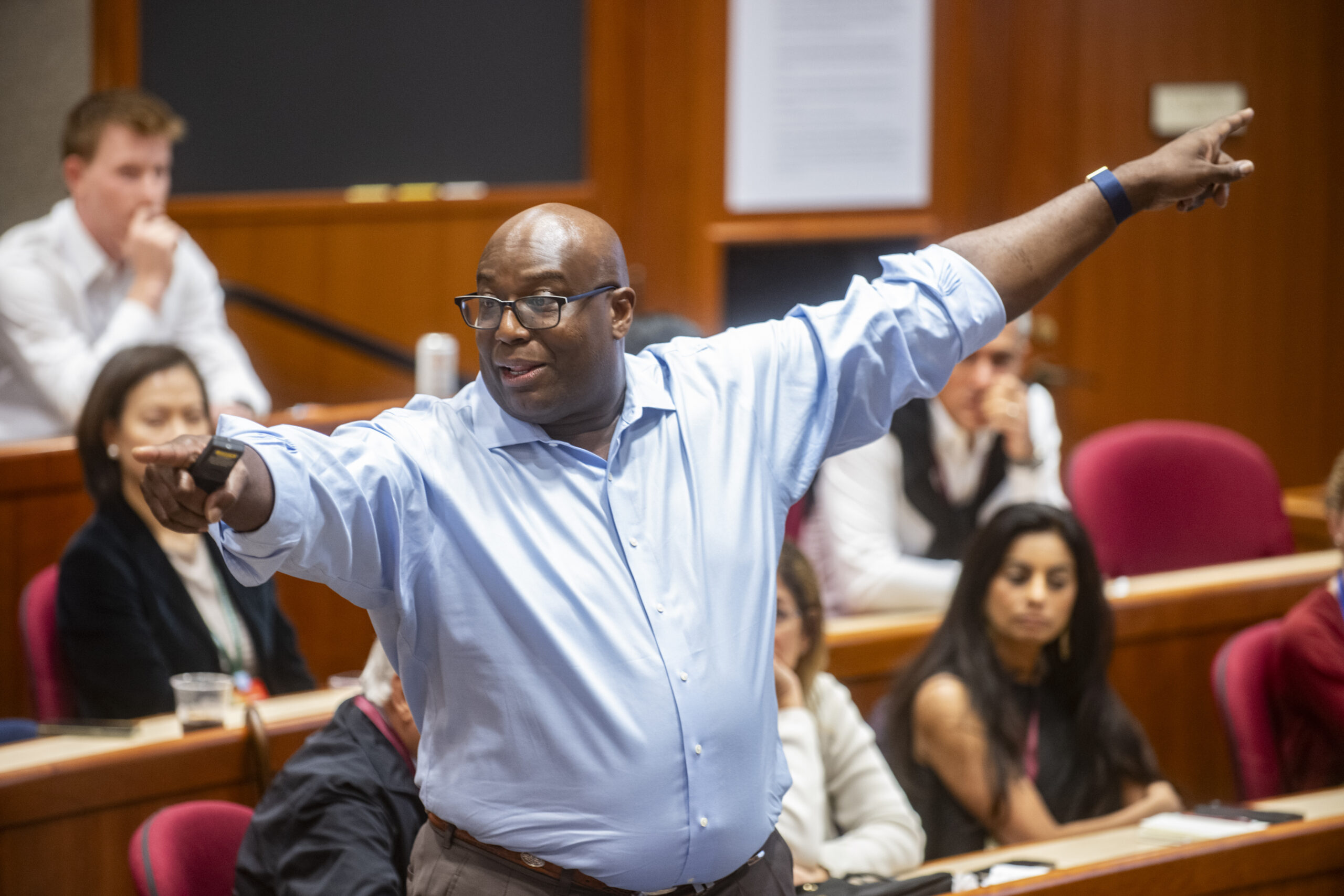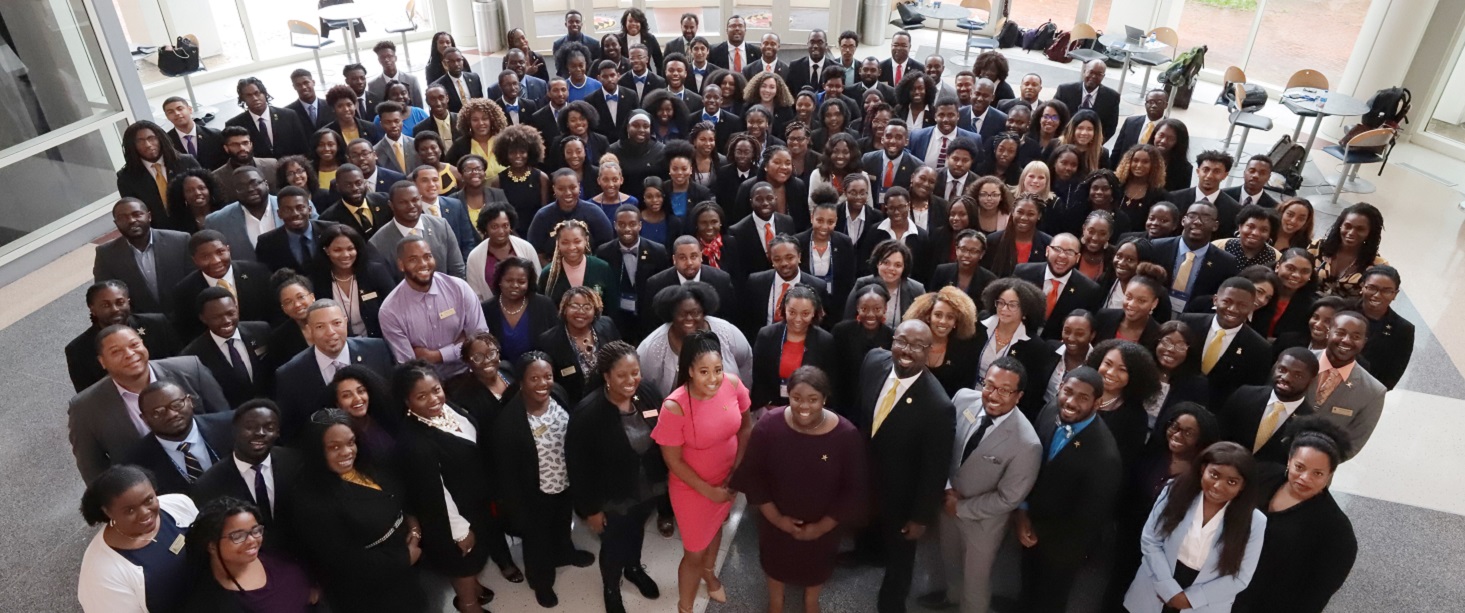

That was it, the question I’ve been asking. Question Zero: What are we trying to accomplish? And do all of our stakeholders—board members, general members, external partners, and staff—have the same answer to the question? It didn’t take long; the first lecture of Strategic Perspectives in Nonprofit Management (SPNM), Herman “Dutch” Leonard’s talk on Results-oriented Management, set me on the path to answering the question for my organization, the National Society of Black Engineers (NSBE).
The ensuing 19 case discussions brilliantly led by SPNM faculty, and the myriad opportunities to meet and learn from 161 other nonprofit leaders from around the world, contributed enormously to my learning. Our study group of eight (Esteves 47) was not only brilliant and accomplished, this diverse group from Australia, Canada, Hong Kong, and the United States was also deeply caring, thoughtful, and humble. We bonded quickly, and we were prepared for every class discussion. Most important, the weeklong experience helped me get to my question: Question Zero.
NSBE is one of the largest student-governed associations based in the United States. Founded in 1975 on the campus of Purdue University, the organization comprises a membership of more than 19,500, including students in grades K–12 and college, and technical professionals around the world. Our mission is “to increase the number of culturally responsible Black engineers who excel academically, succeed professionally, and positively impact the community.” I am the first NSBE executive director who has also served as an elected national chair of the organization, having completed my term nearly 30 years before my appointment as executive director, when I was a graduate student at MIT.
The SPNM faculty and the subsequent lectures, discussions, and peer consultation challenged me to revisit our logic model. Dutch dared us to “push out the data horizon” beyond just Outputs toward auditable Outcomes and Systemic Impact, advice that hit home particularly hard, since “positively impacting the community” was an aspirational claim in our mission statement.
NSBE’s Outputs were trending upward: membership, conference attendance, number of chapters, and revenues. However, we had no data to connect our strategic actions to those positive outcomes, nor did we have data to link our actions to the 25 percent increase in U.S. African-American engineering graduates at the bachelor’s degree level since we launched our 10-year strategic plan in 2015.
And Dutch also challenged me when he posed the question, “Would everyone have the same answer to Question Zero?”
I came to SPNM because I felt our organization was plateauing. Now I understood why: we needed a stronger consensus on what we were trying to accomplish. Is NSBE a leadership development organization, producing young technical leaders as it did for me? Is it simply a jobs broker, linking aspiring engineers with companies and federal agencies looking for diverse technical talent? Is NSBE about planning events, hosting 16 regional and national conferences with thousands of participants? Or is it a membership organization? In the midst of these questions, what “community” were we trying to “positively impact,” and how would we know when that impact had been made?
NSBE’s answer to Question Zero certainly was not consistent, a fact reflected in our challenges with program development and non-strategic resource and staff allocation. Our Strategic Analysis Framework—Vision and Mission, Capacity, and Support—was out of alignment.
I returned from SPNM committed to making sure these framework elements would align for NSBE by first gaining consensus on Question Zero. Last month, I led board and staff meetings through an exercise to answer the questions, “What are we trying to accomplish and why?” The resultant discussions moved us toward linking our Vision to our Mission, our Theory of Change, and our Operational and Resource Models. Significant changes have been made, and more are planned.
We certainly have far to go, as my peer consultation session brought to light. And yet, I’m confident that my own leadership renewal at SPNM, the leadership and organizational frameworks I learned, the talent within NSBE, and a lifelong peer network will help catalyze change in our organization, which now has an answer to Question Zero: “To Unlock Potential, Cultivate Confidence, and Change Lives!”
Karl Reid, Ed. D., is the Executive Director for the National Society of Black Engineers. More information about NSBE is available at www.nsbe.org.
Strategic Perspectives in Nonprofit Management is a Harvard Business School executive education program for nonprofit leaders. To learn more about SPNM and our other executive education programs, visit our website.